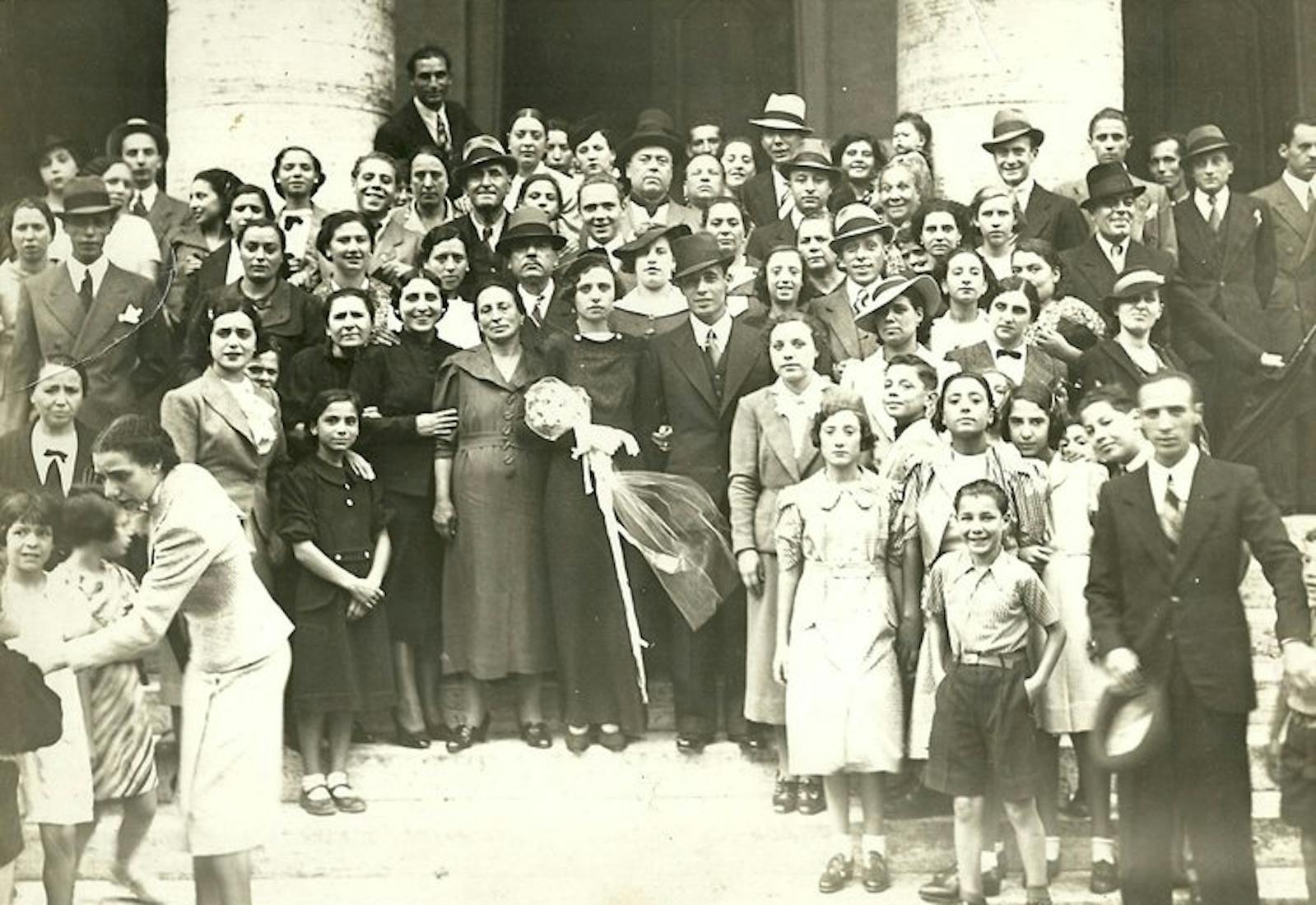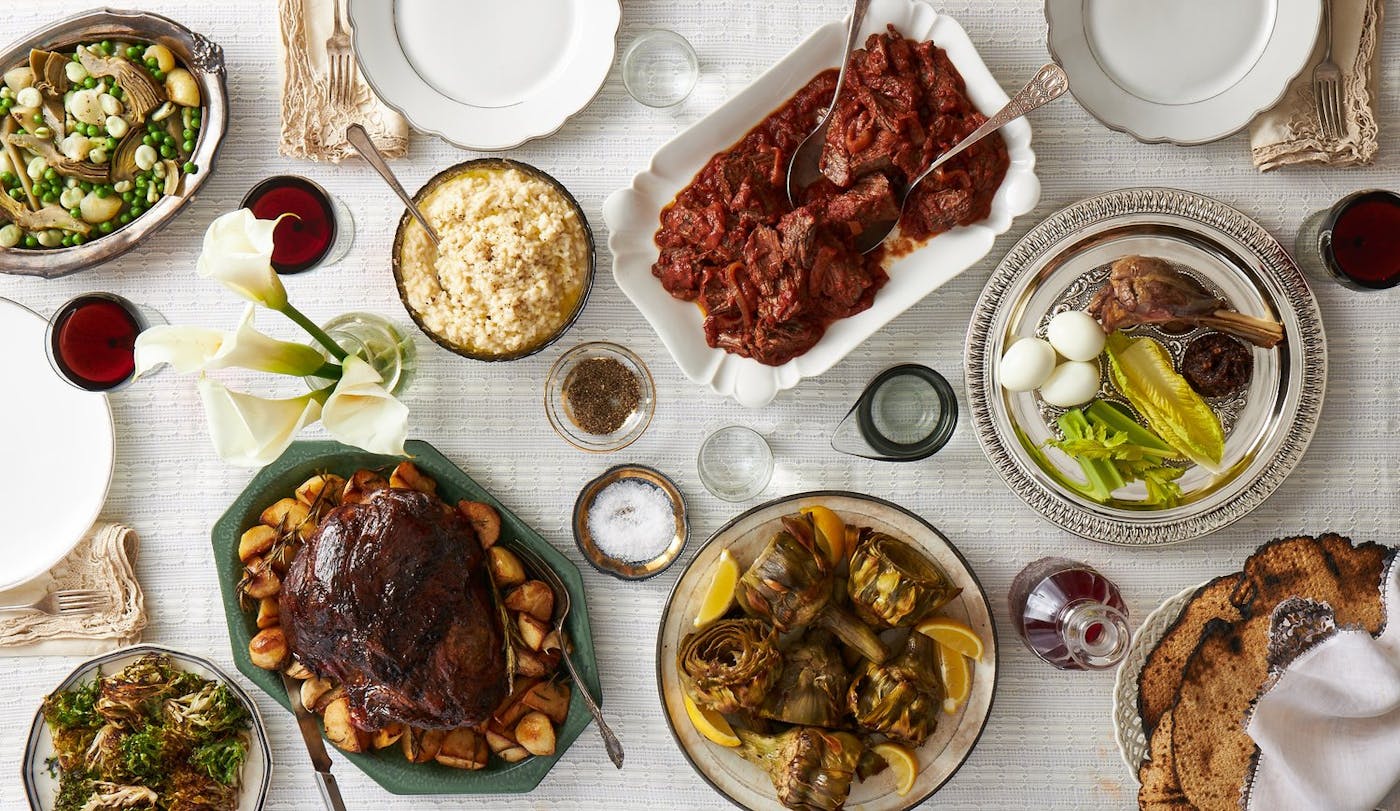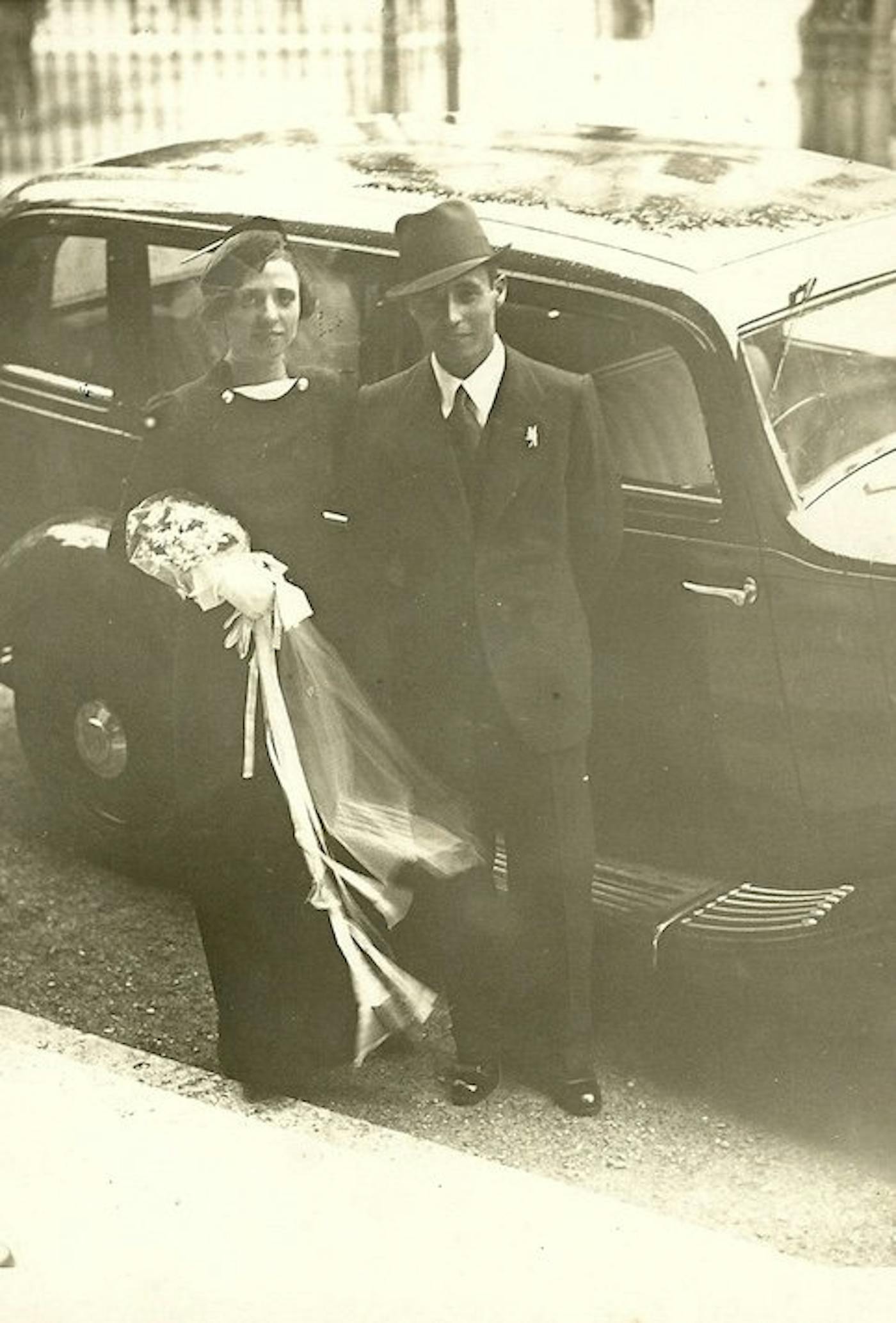Shared by Micaela Pavoncello

Passover dinners in Rome when Micaela Pavoncello was little were a study in contrasts. With her mother’s Libyan family who moved to Rome in 1967, the Seder took five hours. Her father’s family, who trace their roots in Rome to the time of Julius Caesar, spent just 15 minutes on the Seder. “I was always happy to go to my father’s side,” she jokes. “At the end, we would be eating good food, very good food, on both sides.”
Today, she hosts her family for Seder in the Roman neighborhood Monteverde Vecchio at an apartment she shares with her husband Angelo and their three sons. “We are 11 at best, nine generally,” she says. “All of us bring the family recipes.” Her mother-in-law makes riso al uovo or rice enriched with eggs, and roasted lamb with potatoes. There’s also stracotto or beef braised in tomato sauce and vegetables dishes like artichokes with peas and roasted friseé that reflect what’s in season locally around the holiday. For dessert, there are pizzarelle or sweet matzo fritters made in her family with raisins, cocoa powder, and orange zest.
Roman Jews, sometimes known as Italkim, have lived in the Eternal City since the second century BCE with the community growing over the centuries as waves of Jewish immigrants arrived. Among them were Jewish slaves Roman rulers brought back with them after they conquered Jerusalem and destroyed the Temple in 70 BCE, scholar Claudia Roden explains in “The Book of Jewish Food.” The Jewish population grew again as Sephardic Jews fled Spain and southern Italy during the Inquisition. In 1555, the community was forced into a ghetto along the banks of the Tiber River where it remained for more than 300 years.
From the confinement of the ghetto came shared traditions and recipes that weave together the ingredients Roman Jews were able to procure in the ghetto, like eggplant, wild greens, and anchovies, with flavors from the Sephardic community. One of the hallmarks of Jewish cooking in Rome is how similar menus are from home to home. “Every Jewish family was doing the same dishes,” explains Micaela. Many vegetables, including the community’s iconic artichokes, are fried, meats are roasted and cooked slowly in stews. At Passover, lasagna is made with matzo and cookies called ciambellette are baked by families in a community kitchen to ensure they’re kosher and that every home can keep this tradition.
Unlike the generations before when Italian mothers spent their days at home, Micaela and her friends grew up at a time when their mothers worked and few daughters learned to cook from them. A family friend, who was the dean of the local Jewish school, stepped in, showing her how to cook. From there, “I would take from my mother’s side, from father’s side and restart recipes that were lost in the family,” she says. “By 12, I was on that career [path] of reestablishing Roman Jewish Cuisine and Libyan Jewish cuisine.”
Today, as the owner of a walking tour company called Jewish Roma, Micaela finds herself in the Roman Ghetto often, stopping at benches where elderly members of the community pass time to ask about their recipes. She’s also part of online communities where she says “I can ask anything,” about recipes and “there will be an 85-year-old woman who spends all her day cooking,” who will offer to join her on a video call to help her master a technique.
It’s not just Micaela’s generation that’s eager to preserve the community’s recipes. Young Romans in their early 20s are joining in, she says. “It’s modern, it’s a new thing and I’m really happy, because in this way we’re not going to lose the recipes.”

